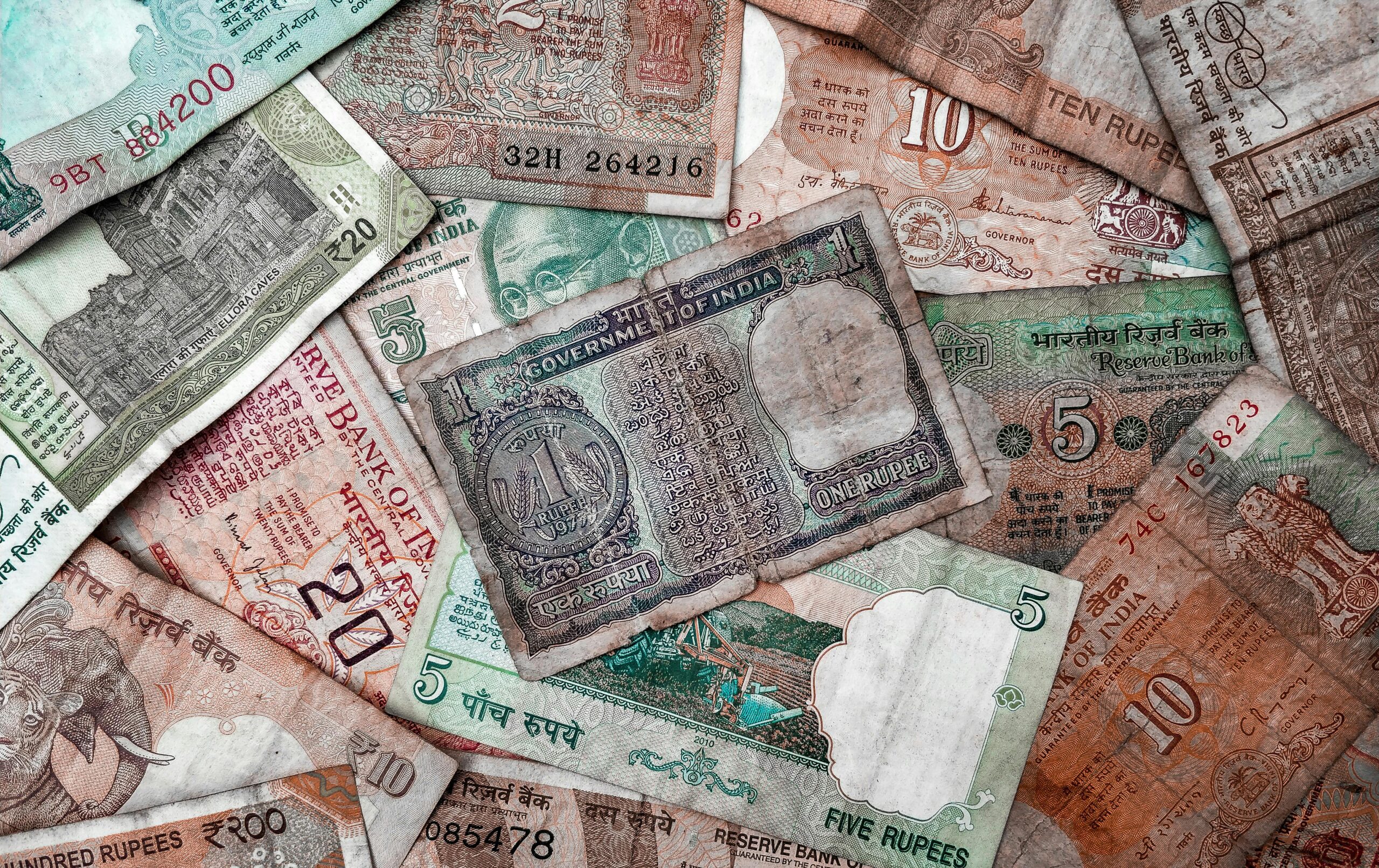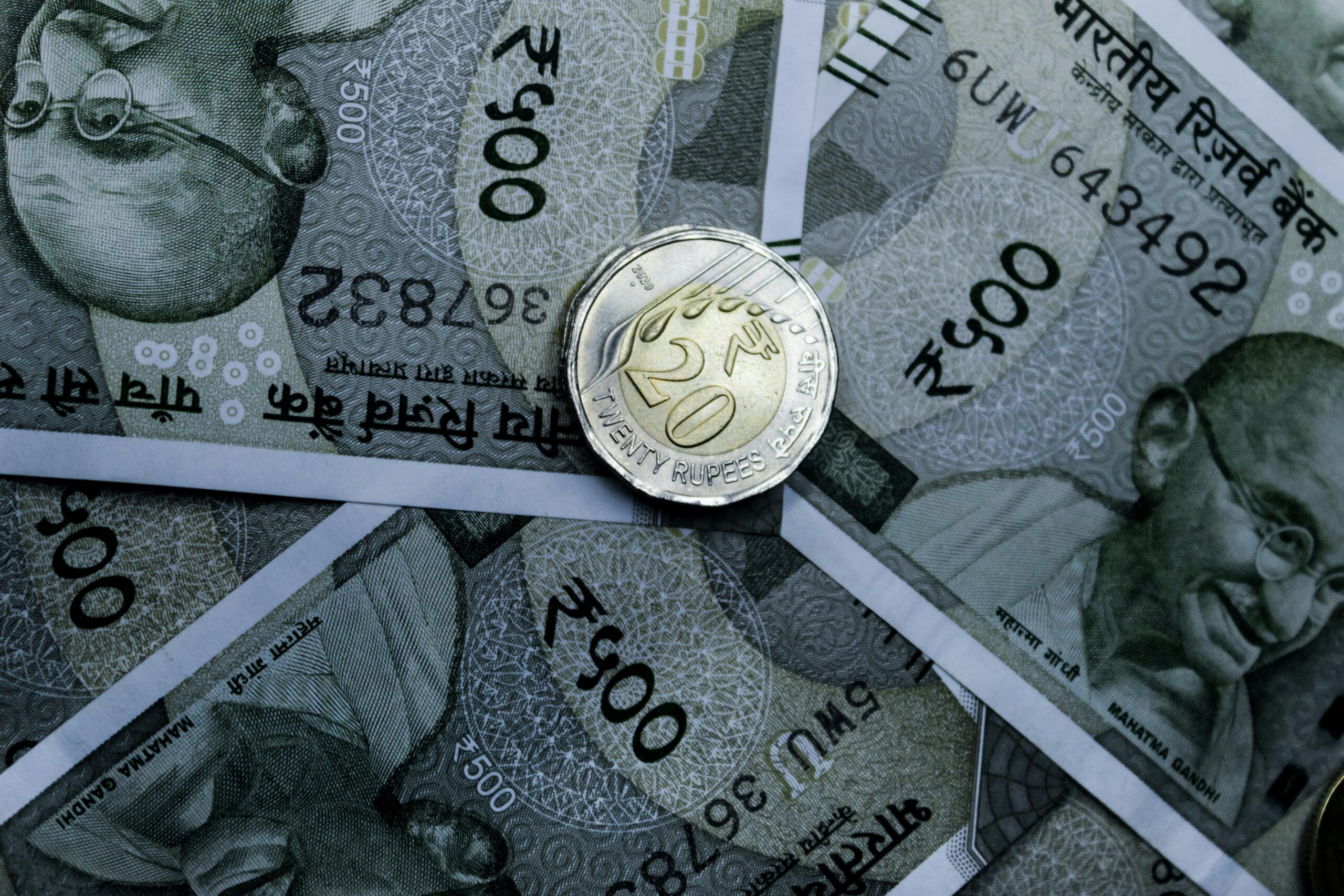In India, the world of nationalised banks is a fascinating journey through the evolution of the financial sector. Have you ever wondered how these institutions impact the economy? Nationalised banks, which were established to promote financial inclusion and serve the masses, play a crucial role in shaping the banking landscape. With a rich history dating back to the 1960s, these banks were created to ensure that the benefits of banking reach every corner of the country. But, what are the advantages of nationalised banks compared to private counterparts? As we navigate through the current trends, like the rise of digital banking and financial literacy initiatives, it’s essential to explore how these banks are adapting to modern challenges while maintaining their core values. Moreover, understanding the role of nationalised banks in economic development can provide insights into their importance in today’s fast-paced world. This blog post will delve into the key features, benefits, and recent developments surrounding nationalised banks in India, ensuring you are well-informed about their significance in shaping the future of banking. Are you ready to discover the untold stories behind these financial giants?
10 Reasons Why Nationalised Banks in India are Your Best Bet for Financial Growth in 2023
Nationalised banks in India, they’re quite a topic, right? You know, it’s like they’re the backbone of the Indian banking system, or at least that’s what they say. There’s a bunch of them, and they all got their own quirks. But hey, let’s dive in, shall we?
So, nationalised banks, they be banks owned by the government, which means that they are not just about profits but also about serving the public. There’s a long history behind it too, not really sure why this matters, but it’s kinda interesting. The process of nationalisation in India started back in 1969. Yeah, that’s ages ago!
Here’s a little list for you, just to keep it simple:
- State Bank of India
- Punjab National Bank
- Bank of Baroda
- Canara Bank
- Union Bank of India
These are just some of the major nationalised banks in India. But like, what’s the real difference between these banks and private ones? Maybe it’s just me, but I feel like nationalised banks focus more on social welfare and less on just making money. They often provide loans for agriculture and small businesses, which is cool, right?
Now, onto some fun facts. Did you know that the State Bank of India is the largest bank in India? It’s kinda like the king of the hill if you will. But, there’s a catch. It has its own set of problems too, like long waiting times and sometimes not-so-great customer service. Just saying, if you’re planning to visit, maybe take a book with you.
In terms of reach, nationalised banks have branches everywhere, even in the most remote areas. I mean, how many times have you seen a tiny village with a bank branch? Quite a few, I bet! Here’s a little chart comparing the reach of nationalised banks versus private ones:
| Type of Bank | Number of Branches | Focus Area |
|---|---|---|
| Nationalised Banks | Over 40,000 | Rural Development |
| Private Banks | Around 30,000 | Urban Customers |
So, while private banks are busy wooing the urban crowd with their fancy apps and services, nationalised banks be like, “Hey, we got you covered even in the middle of nowhere.” But sometimes, it’s like they’re stuck in the past, you know?
And let’s not forget about the ATM network. Here’s another interesting thing: nationalised banks have a wide ATM network too. But sometimes, you might find yourself in a pickle if you’re in a remote place and the ATM is out of order. Like, seriously, can’t they just fix that?
When it comes to loan facilities, nationalised banks in India are known for their low-interest rates, which is great for those who are looking for a loan. But wait! There’s a flip side. The processing time can be slower than molasses in winter. You might be sitting there, tapping your foot, thinking, “Is this a bank or a snail race?”
Here’s a quick list of some loan schemes offered by these banks:
- Kisan Credit Card: Helping farmers get loans for their needs.
- Mudra Loans: For small businesses, because why not, right?
- Education Loans: Because education is important, duh!
But sometimes, it feels like they have more rules than an old-school teacher. You gotta jump through hoops just to get a loan. It’s like, “Can I get a loan without a blood sample?” Maybe it’s just me, but that would be nice.
Now, in terms of technology, nationalised banks have been trying to catch up with private banks. Online banking is a thing, but the interface can be a bit clunky. It’s not like using a sleek app that makes you feel like you’re living in the future. More like, “Welcome to the 90s, let’s dial up the internet!”
And oh, let’s talk about customer service. Sometimes it feels like the staff are just there for the paycheck. They’re not exactly rushing to help, which can be frustrating. You might think, “Did I just walk into a museum?”
To wrap it up, nationalised banks in India have their hearts in the right place, but they definitely got their flaws. They provide crucial services, especially in rural areas, but the execution can be a bit off. Whether it’s long waiting times, outdated technology, or slow processing of loans, there’s room for improvement. But hey, at least they’re trying, right? So, if you’re considering banking with a nationalised bank, just remember to bring your patience along for the ride!
How Nationalised Banks in India are Revolutionizing Access to Credit for Small Businesses
When you think about nationalised banks in India, what pops in your head? For me, it’s like a mixed bag of emotions. I mean, there’s a lot of history and a whole lot of numbers, right? So, let’s dive into this topic like it’s a swimming pool on a hot summer day—no floaties needed, just pure cannonball action.
First off, let’s just state the obvious: nationalised banks are those banks which is owned by the government. Sounds pretty straightforward, huh? But, here’s where it gets a tad complicated. They was nationalised in different phases. The first wave hit in 1969, when 14 major commercial banks was taken over by the Indian government. It was like, surprise! Your bank is now our bank! And then, in 1980, another six banks followed suit. Why do you ask? Maybe it’s just me, but I feel like it was all about control and stability.
Now, let’s get into some numbers. According to the latest stats, there are around 12 major nationalised banks in India today. They serve millions of people, which is like a huge responsibility or something. Here’s a little table to make things clearer:
| Bank Name | Year Nationalised | Headquarters |
|---|---|---|
| State Bank of India | 1955 | Mumbai |
| Punjab National Bank | 1969 | New Delhi |
| Bank of Baroda | 1969 | Vadodara |
| Central Bank of India | 1969 | Mumbai |
| Canara Bank | 1969 | Bengaluru |
| Bank of India | 1969 | Mumbai |
| Union Bank of India | 1969 | Mumbai |
| Indian Overseas Bank | 1969 | Chennai |
| UCO Bank | 1969 | Kolkata |
| Corporation Bank | 1969 | Mangalore |
| Indian Bank | 1969 | Chennai |
| Allahabad Bank | 1969 | Prayagraj |
So, here’s the thing, nationalised banks offer a bunch of services like savings accounts, loans, and all that jazz. But, sometimes, I wonder if they really live up to expectations. You go to open an account, and it feels like you’re signing your life away. Not really sure why this matters, but it’s like, can I just get a simple savings account without jumping through hoops?
Customer service in these banks can be hit or miss. I mean, there’s always that one guy at the counter who seems to have mastered the art of giving vague answers. “Sir, your loan application is under process.” Under process? What does that even mean? I feel like they just say that to buy time or something.
Now, let’s talk about the perks—because every cloud has a silver lining, right? Nationalised banks often provide lower interest rates on loans compared to private banks. This is especially great for folks looking to buy their first home or maybe that fancy car they always wanted. And don’t even get me started on the schemes they have for underprivileged sections of society. It’s like the banks are trying to give back, and hey, that’s commendable.
But, there’s a flip side. Bureaucracy is a real pain in the neck. You’ve got to fill out forms, provide proof of everything from your birth certificate to your last five years of tax returns. Makes you wonder if they’re really trying to help or just making it harder for regular folks. The lending process can be slow as molasses. And trust me, in today’s fast-paced world, nobody has time for that.
Speaking of lending, let’s look at the types of loans nationalised banks usually offer:
- Home Loans: For buying that dream pad.
- Personal Loans: For those unexpected expenses or travel plans.
- Car Loans: So you can drive around in style.
- Education Loans: Because knowledge is power, they say.
- Business Loans: For the entrepreneurs out there.
Each of these loans comes with its own terms and conditions, and it’s essential to read the fine print. Seriously, folks, read it! You don’t want to be that person who misses out on an important detail because they didn’t bother looking.
In the realm of nationalised banks in India, there’s this ongoing debate about whether they are really efficient. Some people swear by them; others, not so much. It’s like trying to pick a favorite child—everyone’s got an opinion, and there’s no right answer. And with the rise of digital
Unlocking the Future: Top 5 Financial Services Offered by Nationalised Banks in India
Nationalised banks in India plays a major role in the financial system of the country. They are like, you know, the backbone of the banking sector, providing essential services to individuals and businesses alike. Since the nationalisation process began in 1969, a number of banks has been brought under government control, and this was done to ensure that the banking system serves the needs of the people, not just a select few. But let’s dive a little deeper, shall we?
So, what exactly is a nationalised bank in India? Basically, it’s a bank that is owned and operated by the government. This means that the profits of these banks are not just lining the pockets of a few rich folks, but instead, they are meant to benefit the general populace. A win-win situation, right? Well, not really sure why this matters, but it seems significant.
History of Nationalisation
Back in 1969, the Indian government decided to nationalise 14 major banks, and in 1980, another six banks were added to the list. The aim was to increase the flow of credit to the agricultural and small-scale industries, which were, let’s face it, pretty much neglected by the private sector. Here’s a little table to show you which banks were nationalised:
| Year | Number of Banks Nationalised | Notable Banks |
|---|---|---|
| 1969 | 14 | SBI, PNB, BoB |
| 1980 | 6 | UCO Bank, Canara Bank |
Isn’t it interesting? Or maybe it’s just me. Anyway, these banks have been tasked with serving the common man, and they do provide a range of services. From savings accounts to loans, they are quite the multitaskers. But like anything else, they got their fair share of issues too.
Services Offered by Nationalised Banks
So, let’s talk about the services. They offer a whole bunch of products, right? Here’s a quick list of some common services provided by nationalised banks in India:
- Savings Accounts: Basic accounts for day-to-day transactions.
- Current Accounts: For businesses and frequent transactions.
- Loans: Personal loans, home loans, and education loans, you name it.
- Fixed Deposits: For those who want to earn some interest on their savings.
- Insurance Products: Life insurance and general insurance, because why not?
But, here’s the kicker — sometimes people find it hard to get loans approved. The process can be super slow, and it feels like you’re in a never-ending queue. Seriously, it’s like watching paint dry.
Pros and Cons of Nationalised Banks
Let’s break it down a bit and weigh the pros and cons, shall we?
Pros:
- Government Backing: Customers feel more secure because these banks are backed by the government.
- Wide Reach: They have a massive network of branches across the country, making it easier for people to access banking services.
- Focus on Social Welfare: They often prioritize lending to sectors like agriculture and small businesses, which is a good thing, right?
Cons:
- Bureaucratic Delays: You might experience a lot of red tape, and that can get frustrating.
- Limited Innovation: Compared to private banks, they sometimes lag behind in technology and customer service. So, if you’re looking for fancy apps, you may be disappointed.
- Corruption Issues: Not all, but yeah, some banks have had their share of scandals, which doesn’t really inspire confidence.
Current Scenario
As of now, there’s around 12 nationalised banks in India, and they are still a significant part of the banking landscape. They are, however, facing tough competition from private banks and fintech companies, which are all about speed and convenience. Maybe it’s just me, but I feel like nationalised banks need to up their game to keep up with the times.
Here’s a quick list of some major nationalised banks in India:
- State Bank of India (SBI)
- Punjab National Bank (PNB)
- Bank of Baroda (BoB)
- Canara Bank
- Union Bank of India
Future of Nationalised Banks
What’s next for these banks? It’s a bit uncertain, to be honest. With the rise of digital banking and changing customer expectations, nationalised banks are under pressure to innovate. They need to adopt more technology-driven solutions if they want to retain their customers. And let’s be real, who doesn’t like banking from the comfort of their couch, right?
Maybe, just maybe, we’ll see a transformation in how these banks operate. But until then, they’ll continue to
What You Need to Know About Nationalised Banks in India: Key Benefits and Services Explained
So, let’s dive into this whole thing about nationalised banks in India. You know, those banks that the government decided to take over, like it was some kind of Monopoly game. Like, seriously, who thought that would be a good idea? Anyway, they’ve got a pretty huge role in the country’s economy, or so they say. But, I’m not really sure why this matters, but here we go.
First off, let’s talk a bit about what exactly nationalised banks are. Basically, these are banks that were owned by the government, and they were nationalised (obviously) to promote financial inclusion and provide credit to those who need it. The first major nationalisation happened back in 1969, when the government decided to take over 14 major commercial banks. It was like, “Hey, let’s just control the money flow!”
Now, there’s a whole list of these nationalised banks in India. Some of the big names that pop into your head are State Bank of India (SBI), Punjab National Bank (PNB), and Union Bank of India. It’s like the Avengers of the banking world, but without the superhero costumes. Here’s a quick rundown of some of them, just to make you feel a bit more informed (or confused, who knows?):
| Bank Name | Year Nationalised | Notable Features |
|---|---|---|
| State Bank of India (SBI) | 1955 | Largest bank, offers diverse services |
| Punjab National Bank (PNB) | 1969 | Strong retail banking presence |
| Union Bank of India | 1969 | Focus on rural development |
| Bank of Baroda | 1969 | International presence |
| Canara Bank | 1969 | Offers a range of financial products |
Kinda neat, right? But then again, you might be thinking, “So what?” It’s not like they wear capes or anything. But these banks do play a crucial role in financial stability, or at least that’s what they tell us. They help in providing loans and advances, which is super important for businesses and individuals alike.
And speaking of loans, let’s chat about how these nationalised banks in India cater to different sectors. They provide loans to agriculture, small and medium enterprises, and even education. It’s like, “Hey, we gotcha covered!” But wait, there’s more! They also offer savings accounts, fixed deposits, and a bunch of other financial services.
Now, it’s not all rainbows and butterflies. Nationalised banks can sometimes be slow to adapt to new technologies. I mean, have you ever tried using their online banking? It’s like trying to solve a Rubik’s Cube blindfolded. And don’t even get me started on their customer service. It’s like they think we’re asking for a kidney when we just want to know our balance. Maybe it’s just me, but it feels like they could use a little pep talk or something.
Okay, so there’s also the matter of financial inclusion. This is where nationalised banks really shine. They aim to make banking accessible for everyone, especially in rural areas. You’d think that would be a no-brainer, right? But, it’s a work in progress. The government has launched various initiatives to promote this, like the Pradhan Mantri Jan Dhan Yojana. It’s all about helping the underprivileged get bank accounts and, well, feel like they’re part of the financial world.
Here’s a fun little fact: as of 2021, the number of bank accounts opened under this scheme had crossed over 40 crore! Yup, that’s billion with a ‘b’. But, I can’t help but wonder if all those accounts are actually being used or if they’re just sitting there collecting dust, you know?
Let’s not forget about the challenges these nationalised banks in India face. Non-Performing Assets (NPAs) are a big concern. It’s like, “Oh no, we loaned out money, and now we can’t get it back!” This can lead to financial instability and is a headache for the government. They’ve got to manage these bad loans, or else it’s like trying to bail water out of a sinking ship with a teaspoon.
To wrap this up (kind of), nationalised banks in India have a ton of responsibilities. They’re not just your average banks; they’re like the backbone of the Indian economy, or at least that’s what they want us to believe. They provide crucial services, help in financial inclusion, and support various sectors. But, they’ve got their fair share of issues too. It’s not all smooth sailing, folks. So, next
Are Nationalised Banks in India the Answer to Your Financial Problems? Insights and Trends for 2023
When we talk about nationalised banks in India, it’s like opening a can of worms, right? I mean, who really knows all the ins and outs of these banks? They play a huge role in the Indian economy, or so they say. But, what does that even mean for the average Joe or Jane?
First off, let’s get a little history lesson. The nationalisation of banks in India started back in 1969, when the government decided it was time to take control. They wanted to make banking accessible to everyone, not just the rich folks. It’s like they thought, “Why not spread the wealth around a bit?” So, this led to the nationalisation of 14 major commercial banks. And then, in 1980, another 6 banks were nationalised. Like, wow, that’s a lot of banks! But did it really help? Not really sure why this matters, but here we go.
Now, the big question is: what’s the point of nationalised banks in India? Well, they claim to promote economic growth, support agriculture, and provide loans to small businesses. In theory, it sounds great. But in practice? Maybe it’s just me, but I feel like there’s a lot of red tape that makes things complicated. It’s not like you can just waltz into a bank and get a loan like it’s a piece of cake. Nope, you gotta jump through hoops.
Here’s a little list of some of the major nationalised banks in India:
- State Bank of India (SBI)
- Bank of Baroda
- Central Bank of India
- Union Bank of India
- Punjab National Bank (PNB)
You might be thinking, “Okay, so what’s the deal with these banks?” Well, they offer a variety of services, from savings accounts to fixed deposits, and even loans. But, let’s be honest, the customer service can be hit or miss. Like, one day you might get someone who’s helpful, and the next day you’re staring at a wall of indifference. It’s a real gamble, folks.
Here’s a table that kinda sums up what these banks do:
| Bank Name | Services Offered | Customer Service Rating |
|---|---|---|
| State Bank of India | Savings, Loans, Insurance | 3.5/5 |
| Bank of Baroda | Savings, Loans, Forex | 4/5 |
| Central Bank of India | Savings, Loans | 2.5/5 |
| Union Bank of India | Savings, Loans, Investments | 4/5 |
| Punjab National Bank | Savings, Loans, Mutual Funds | 3/5 |
Now, let’s talk about one of the biggest perks of nationalised banks in India. They often have lower interest rates compared to private banks. That’s right! If you’re looking to borrow some cash, it might be worth it to check them out. But, hold your horses! You might have to fill out a mountain of paperwork, and don’t even get me started on the waiting times. It’s like watching paint dry, honestly.
And then there’s the whole issue of technology. Some nationalised banks in India are trying to keep up with the times, but others? Not so much. You might find yourself using old-school methods when you really just wanna use an app. It’s like, “Hello, it’s the 21st century!” But hey, maybe they’re just nostalgic for simpler times.
Another thing worth mentioning is the government’s role in these banks. Since they’re nationalised, the government kinda has a say in how they operate. It’s supposed to ensure that these banks work for the public good. But, then again, does it really work that way? Sometimes it feels like they’re just there to collect a paycheck, and the average person is left hanging.
In addition, the nationalised banks in India also play a significant role in financial inclusion. They’re supposed to make banking services available to the underserved sectors of society. But, let’s be real, not everyone has easy access to these services. It’s a work in progress, I guess?
So, if you’re pondering whether to bank with a nationalised bank or a private one, it’s a mixed bag. They’ve got their pros and cons, just like everything else in life. I mean, who doesn’t love a little drama in their banking experience, right?
In the end, it’s all about what works best for you. Do you wanna save a few bucks on interest rates and deal with some bureaucratic nonsense? Or would you rather pay a bit more and get better service? It’s a personal choice, and honestly, it kinda depends
Conclusion
In conclusion, nationalised banks in India play a pivotal role in shaping the country’s financial landscape. By prioritising financial inclusion, they provide essential banking services to the underserved population, thereby driving economic growth and stability. The historical background of these banks, their contribution to the agricultural and industrial sectors, and their commitment to social welfare underline their significance in the Indian economy. However, challenges such as non-performing assets and the need for digitisation remain pressing issues that require attention. As we move towards a more inclusive financial system, it is crucial for stakeholders—government, banks, and citizens alike—to collaborate and innovate. Embracing digital banking solutions and enhancing customer service can further strengthen the foundation laid by nationalised banks. Let us advocate for reforms that promote transparency and efficiency, ensuring that these institutions continue to serve as pillars of support for India’s diverse economic landscape.






























































